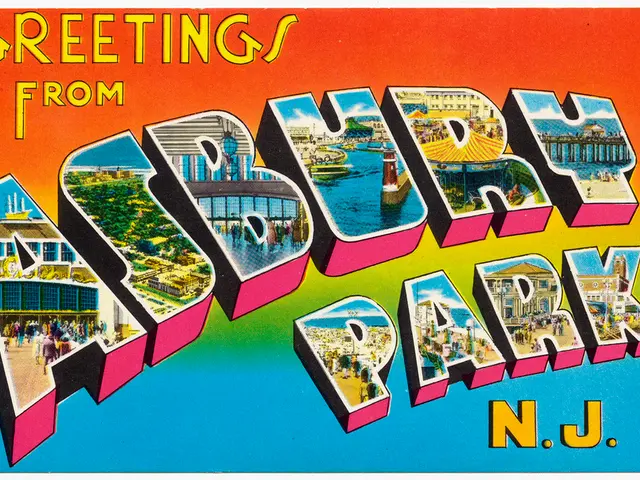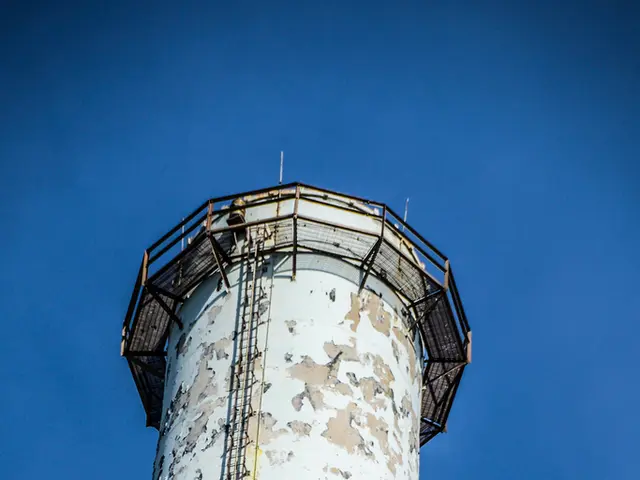Doubts cast on the feasibility of Hong Kong's Hung Hom yacht marina project
Hangin' Out by the Harbor: Questioning the Plan for Hung Hom's Waterfront Transformation
There's a buzz in the city about transforming a part of Hung Hom into a world-class waterfront, but some local experts are voicing concerns. These concerns center around the prerequisite revitalization of existing facilities, the choice of residential area for preliminary development, and the potential overcrowding of commercial activities in the hotspots like East Tsim Sha Tsui and Hung Hom.
Within the Harbourfront Commission, there are mixed feelings. Although commission members have expressed support for the proposal, they've raised questions about the wisdom of the plan.
This mega-project aims to turn 24 hectares (59 acres) around the Hung Hom MTR station into a landmark waterfront, complete with a yacht marina that can accommodate up to 200 vessels. Additionally, the plan includes a 50-story residential-commercial tower housing entertainment amenities, upgraded public transportation facilities, and improved pedestrian walkways.
But, is it all necessary? Chiky Wong Cheuk-yuet, a commission member, questions whether there's a need for so much commercial activity in these areas, citing concerns about old and struggling shopping malls[1].
Wong suggests a transport museum could be an interesting addition to the area, given its proximity to Whampoa, which boasts a rich maritime history. He also wonders about the rationale behind choosing Hung Hom as the location for this grand waterfront development.
The waterfront development proposal in Hung Hom is part of broader efforts to promote yacht tourism and boost Hong Kong's mega-event economy[2]. Yet, questions linger about the project's viability and if it's suitable for the area, as concerns arise regarding market conditions, supportive policies, location advantages, and environmental and access challenges. The project's success will largely depend on how effectively private sector engagement is managed and how potential obstacles are steered clear[3].
Construction on this monumental project is expected to commence in 2029, with the first phase to be completed within approximately ten years[1][2]. Stay tuned, Hong Kong; the future of our waterfront is on the horizon!
Spilling the Tea on Hung Hom's Waterfront Development
Hung Hom is in the spotlight for waterfront development with a yacht marina as part of a broader campaign to transform the area into a marquee waterfront. The main goal? To boost yacht tourism and bolster the city's mega-event economy, with hefty investments predicted from the private sector[1][2].
Key Components of the Development Plan
- Mix-Use Spaces: The project consists of residential, commercial, retail, and entertainment areas, including a 50-story residential-commercial tower and a yacht marina. Infrastructure improvements encompass an indoor bus station, updated pedestrian pathways, and optimized transportation facilities[2][3].
- Economic Potential: The venture hopes to attract upscale property buyers and luxury tourists, generating substantial revenue through residential development, retail, and entertainment facilities[1][2].
Concerns and Considerations
Viability
- Market Volatility: Despite current market uncertainty, authorities remain optimistic that developers will be captivated by the diverse revenue streams from residential, retail, and entertainment activities[2].
- Policy Boost: There are worries about ensuring supportive policies, such as streamlined licensing procedures for visiting international yachts in Victoria Harbour[1].
Suitability
- Location Perks: The area's proximity to Hung Hom Station and existing infrastructure make it geographically advantageous for development[3].
- Eco and Access Predicaments: Although striving to improve public spaces and walkways, potential environmental impacts and logistical challenges remain, such as marina integration without disrupting waterways and ensuring easy access for residents and tourists[4].
Future Developments and Timelines
The project is scheduled to begin in 2029, with the first phase estimated to be completed within roughly ten years. The endeavor's success will hinge on solid private sector collaboration and adept navigation of potential hurdles[1][3].
- The waterfront development in Hung Hom, aimed at boosting yacht tourism and the city's mega-event economy, includes mix-use spaces such as residential, commercial, retail, and entertainment areas, along with a 50-story residential-commercial tower and a yacht marina.
- Chiky Wong Cheuk-yuet, a commission member, has questioned the viability of the development, expressing concerns about the project's dependence on private sector investments and the market conditions.
- Furthermore, Wong has raised concerns about the suitability of Hung Hom as the location for such a grand development, suggesting that a transport museum could be an interesting alternative given its proximity to Whampoa's rich maritime history.
- The success of the project will depend on how effectively private sector engagement is managed, as potential obstacles must be steered clear for the endeavor's success, such as ensuring supportive policies, streamlined licensing procedures, and successful navigation of environmental and access challenges.




